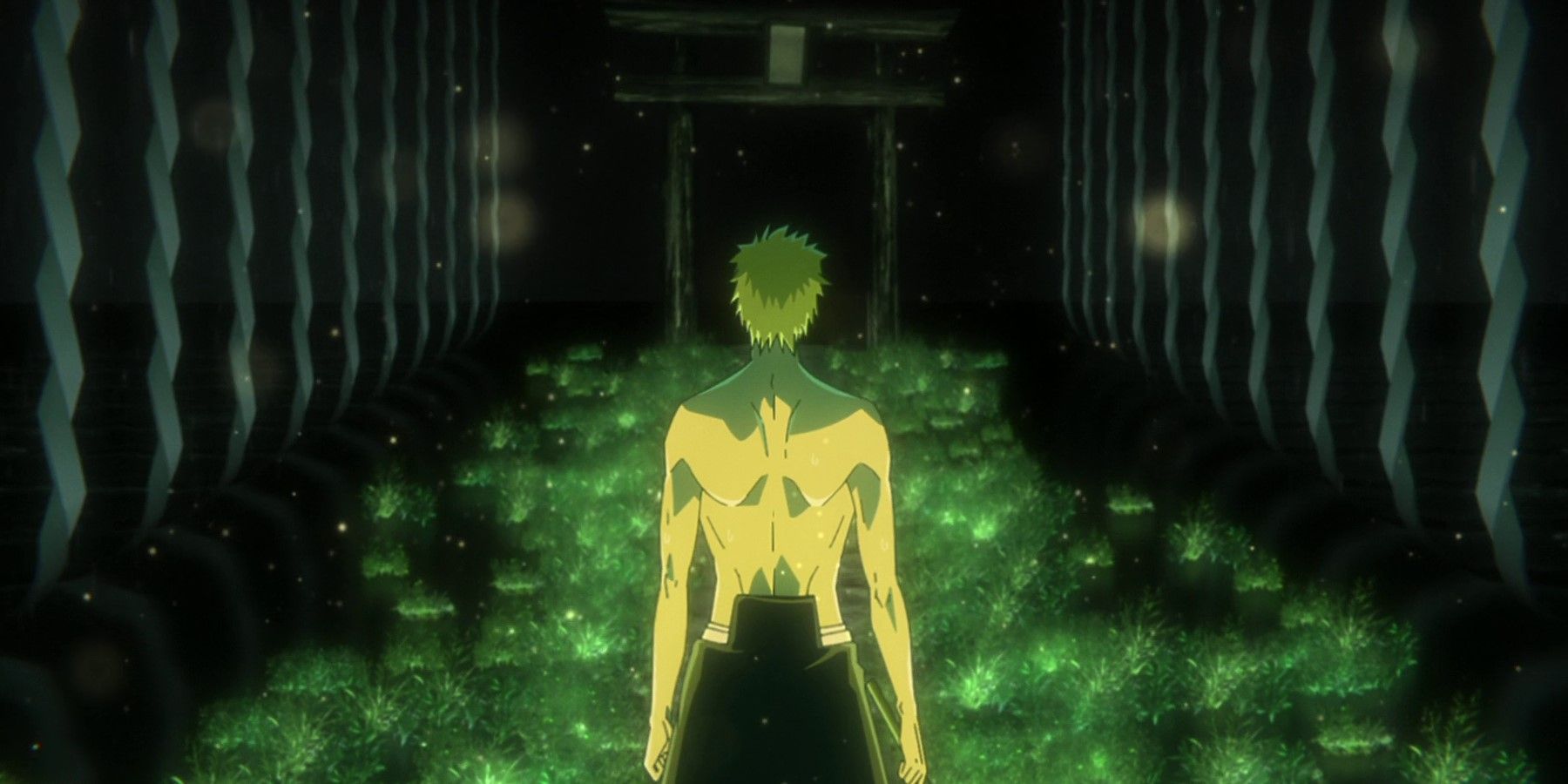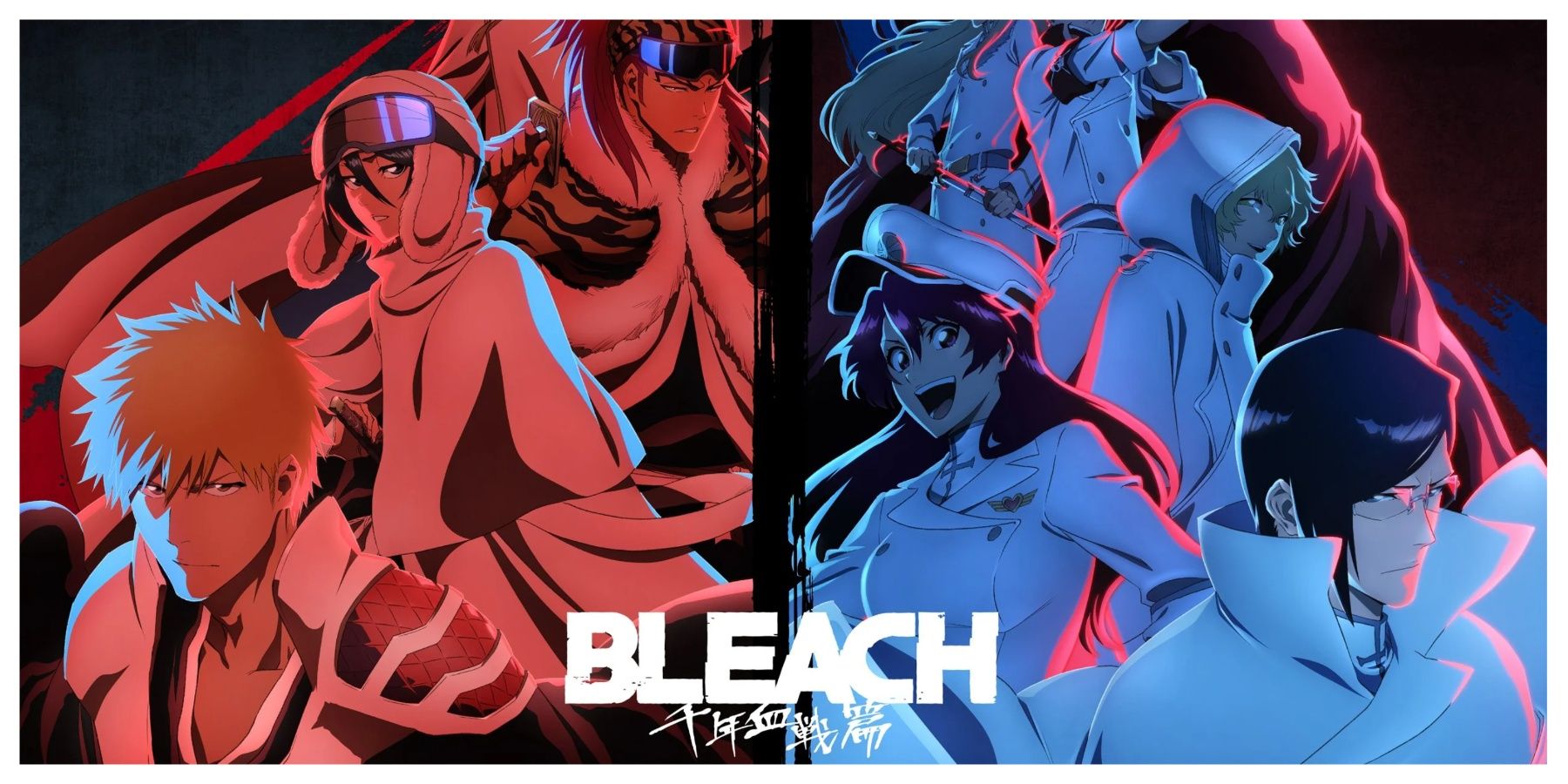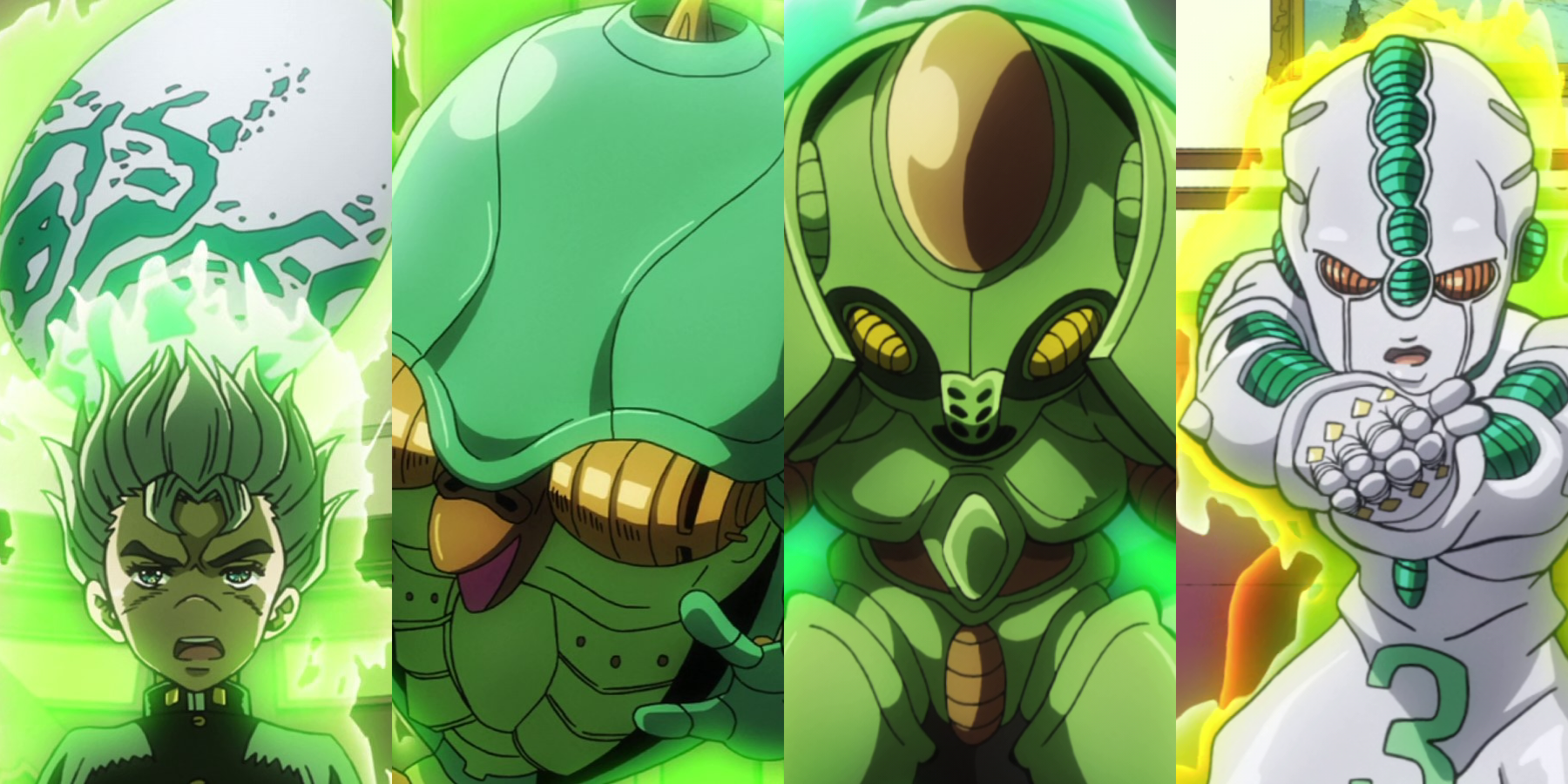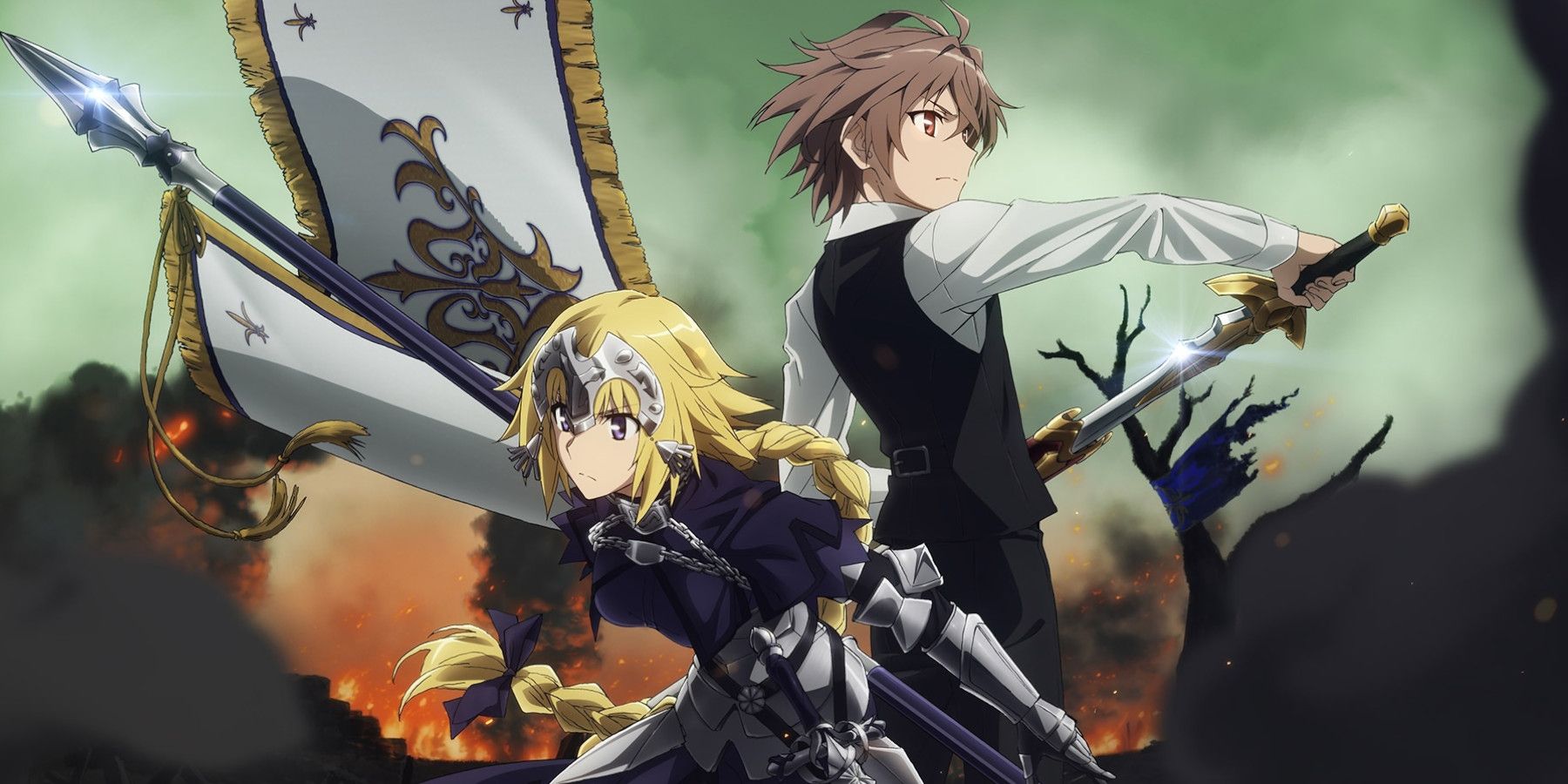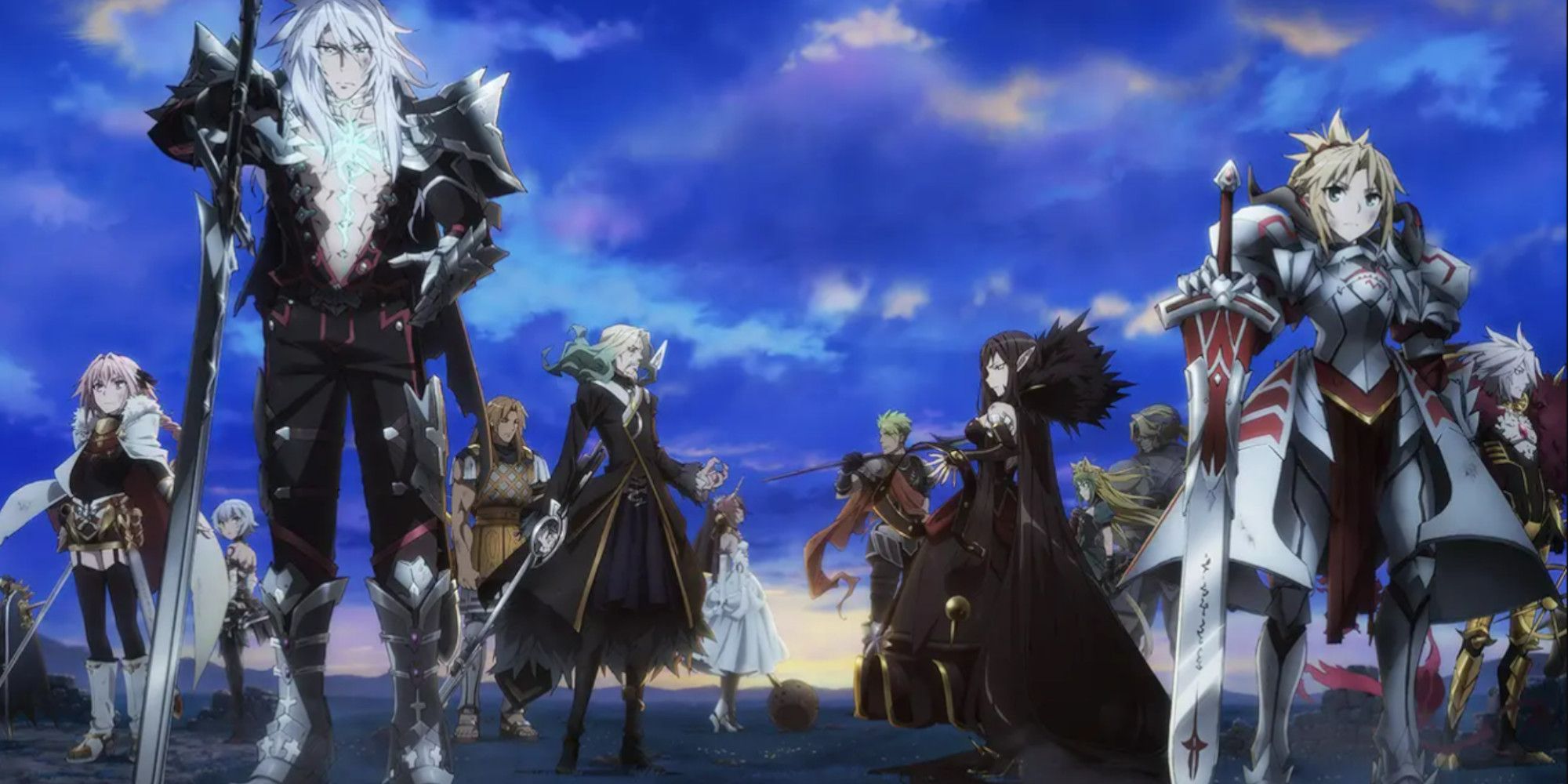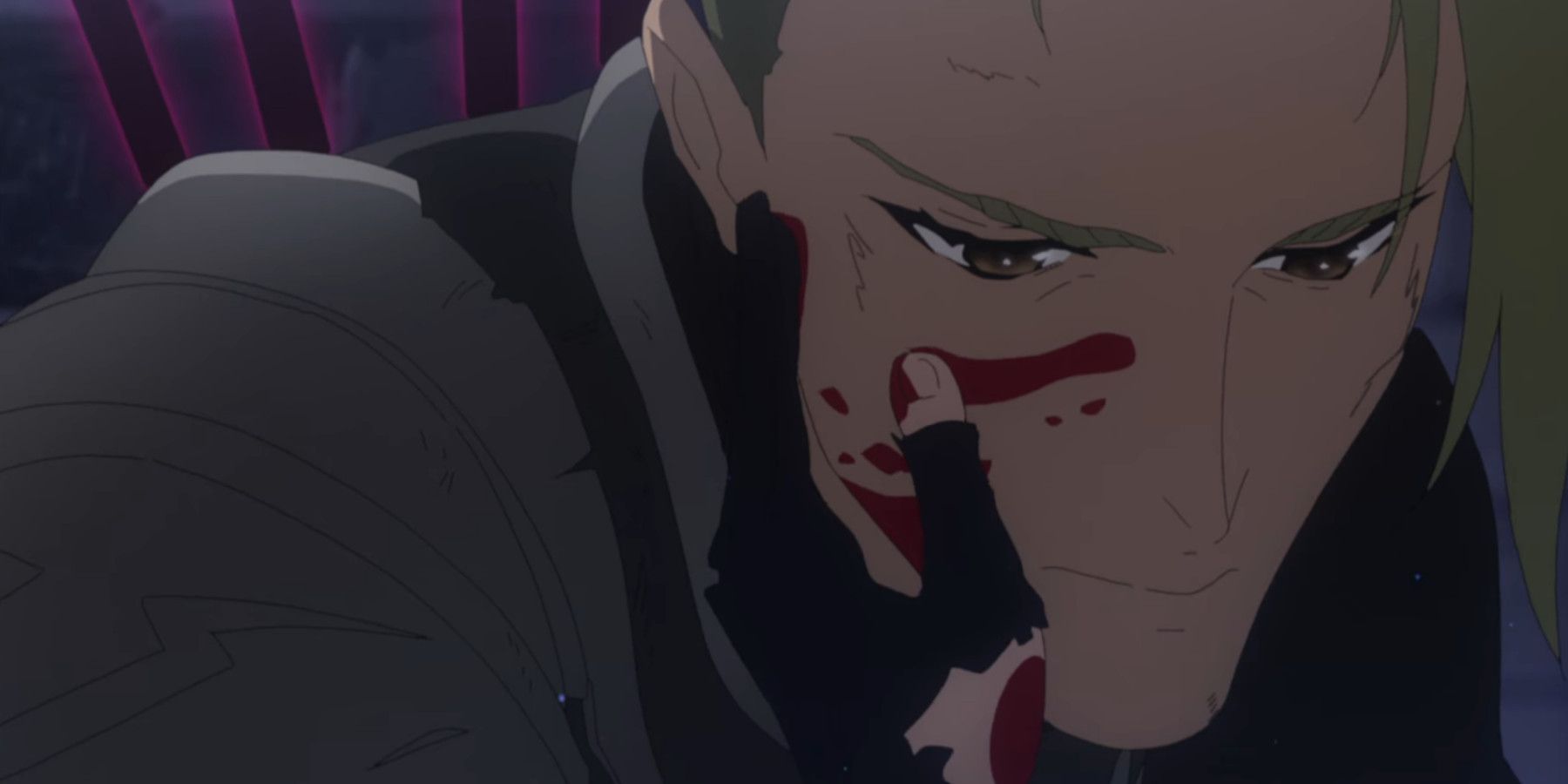Highlights
- Fate/Apocrypha initially faced mixed reception due to high expectations from fans and criticism of the studio, but it is now remembered more fondly.
- The story of Apocrypha, with its large cast and complex dynamics, was seen as cumbersome by some but is praised for its characters and subversion of the Fate formula.
- Despite some flaws in animation and consistency, the sound design and music of Apocrypha stand out and make it worth watching, especially for its strong cast and occasional brilliant visuals.
The adaptation of Ryohgo Narita's Fate/strange Fake is one of the most anticipated and - prior to the anime's announcement - most demanded in the expanded Fate Series in years. That's why it's so funny to look back at 2017's Fate/Apocrypha, which shares a very similar premise to Strange Fake as well as the same studio, and recall that the reception was rather mixed.
Directed by Yoshiyuki Asai and based on the novel series by Yuuichirou Higashide, Apocrypha is set in an alternate timeline that breaks off from Fate/Stay Night around the Third Holy Grail War. When the Yggdmillenia clan declares war against the Mages Association, both sides send seven Master-Servant pairs to battle over the Greater Grail, thus starting the "Great Holy Grail War."
The Initial Reception
Nowadays, Apocrypha is remembered a bit more fondly than when it first aired. To make sense of this shift, one must understand the state of the Fate Series at the time, the expectations of the fanbase, and the reputation of A1 Pictures. For starters, given the success of 2014's Unlimited Blade Works, Fate fans expected the best, and at the time, the best was Ufotable.
A1, on the other hand, was the recipient of a lot of criticism for its output during the mid-2010s. This trend was based partly on blossoming fatigue toward low-quality light novel adaptations but also misconceptions about A1's studio structures. For fans of UBW who subscribed to the idea that Ufotable's budget was "unlimited," a story as big as Apocrypha being adapted by someone else felt like a tragedy.
To that point, the sheer size of Apocrypha's story seemed cumbersome to casual audiences. This was the "Great Holy Grail War" after all, taking the structure established in Fate/Stay Night and more than doubling the number of characters. Some wondered how such a huge cast could find room to breathe without half of it being sidelined or killed off.
What's funny is how so many of these variables are the exact same with Strange Fake, a story with considerably more hype behind it. A1's reputation has changed, and they've proven they're capable of higher-quality works, but it certainly helps that it's written by Ryohgo Narita, the same man who penned Bacanno and Durarara. These stories are famous for huge casts whose individually complex arcs intermingle in a chaotic but utterly captivating manner.
It's natural that people would be more excited about a story by an author who is known for his adept ability to juggle so many characters. By that same token, one could say that Apocrypha is simply a tough story to do properly, but frankly, all that means is that the anime doesn't get enough credit for accomplishing what it does within this cumbersome premise.
Fate, But With (Another) Twist
Contrary to popular belief, Fate is pretty simple, at least with regard to its basic structure. A Grail War is just another name for a formula that audiences have seen in other battle royale stories. A set number of participants, a series of rules for the competition, and a tantalizing goal that everyone strives for. The charm of every new Fate comes from how this formula is subverted.
There has never been a normal Grail War in the same way there has never been a normal war. Perhaps a servant is summoned in an abnormal manner. Other times, more or fewer servants are summoned. Rest assured, Apocrypha's subversion of the mold extends far beyond the body count. From an Assassin whose strength is more comparable to a Caster to Servants' souls being bonded to other characters' bodies and more; there are a lot of tweaks to the dynamics.
Just the protagonist alone is an unending collection of unprecedented phenomena. Sieg starts as a homunculus, and like all homunculi in Fate, he was created to be a tool for mages, but he strives to have a life of his own. Sieg's character progression is one of the most fascinating as well, purely for his accumulation of powers.
He's only named Sieg because he's gifted the heart of the servant Siegfried to save him from death and on top of the powers he gained from that, he manages to become a Master later on. Like Shirou Emiya before him, Sieg is a relatively low-leveled protagonist who manages to attain the strength necessary to pull off some crazy feats later on.
(In)Consistently Awesome
Even without subverting the formula, though, Apocrypha has genuinely great characters, although some are obviously more fleshed-out than others. Sieg's journey feels like justice for the homunculi of past Fate stories, who were simply expendable and rarely got happy endings. Furthermore, his romance with Jeanne d'Arc, while simple, was cute.
Some characters are victims of limited screen time and are quickly forgotten going into the latter half, like Vlad Tepes and especially Darnic. Others are conceptually dubious, like when Apocrypha tries to tie the legend of Jack the Ripper to the suffering of children during the Industrial Revolution. This creates some compelling drama later on but lacks cohesion in itself.
It's a testament to the storytelling, though, that so many of these characters don't just stand out within this show, but the franchise as a whole. Mordred and her Master Shishigou have some of the best chemistry of any pair in Fate. Astolfo might not be the strongest Servant, and he'll freely admit it, but he has a pride and honor about him that feels like the very definition of a Heroic Spirit. The list goes on, but what's important is that the good characters outweigh the bad.
Much of the magic behind Apocrypha lies in its sound. Where the scale of the Grail War can't be fully seen, it's most definitely heard thanks to sound designer Yasumasa Koyama, to the point of excess even. As for the music, Masaru Yokoyama's soundtrack rivals even Yuki Kajiura's from Fate/Zero. It's a shame to say that the stellar audio of this series can be a crutch at times.
Animation-wise, this show can be uneven, messy, and altogether generic. Just as was stated before, there are highs and lows, but the highs of this series are worth cherishing in spite of some lackluster episodes. Some scenes can convey incredible emotional weight through character acting, and some of the fights rank among the best in Fate's anime oeuvre, especially those from the historic Episode 22.
The most difficult thing about watching Fate/Apocrypha is figuring out how its timeline factors into other entries, which is more or less the same dilemma as any of them. This is to say that, for those who have yet to watch it, it is worth giving a shot, whether for the strengths of its cast or its occasionally brilliant visuals. In many ways, it's a sample of what A1 Pictures would later become. In other words, Apocrypha walked so that Strange Fake could run.
Fate/Apocrypha is available to stream on Netflix.
